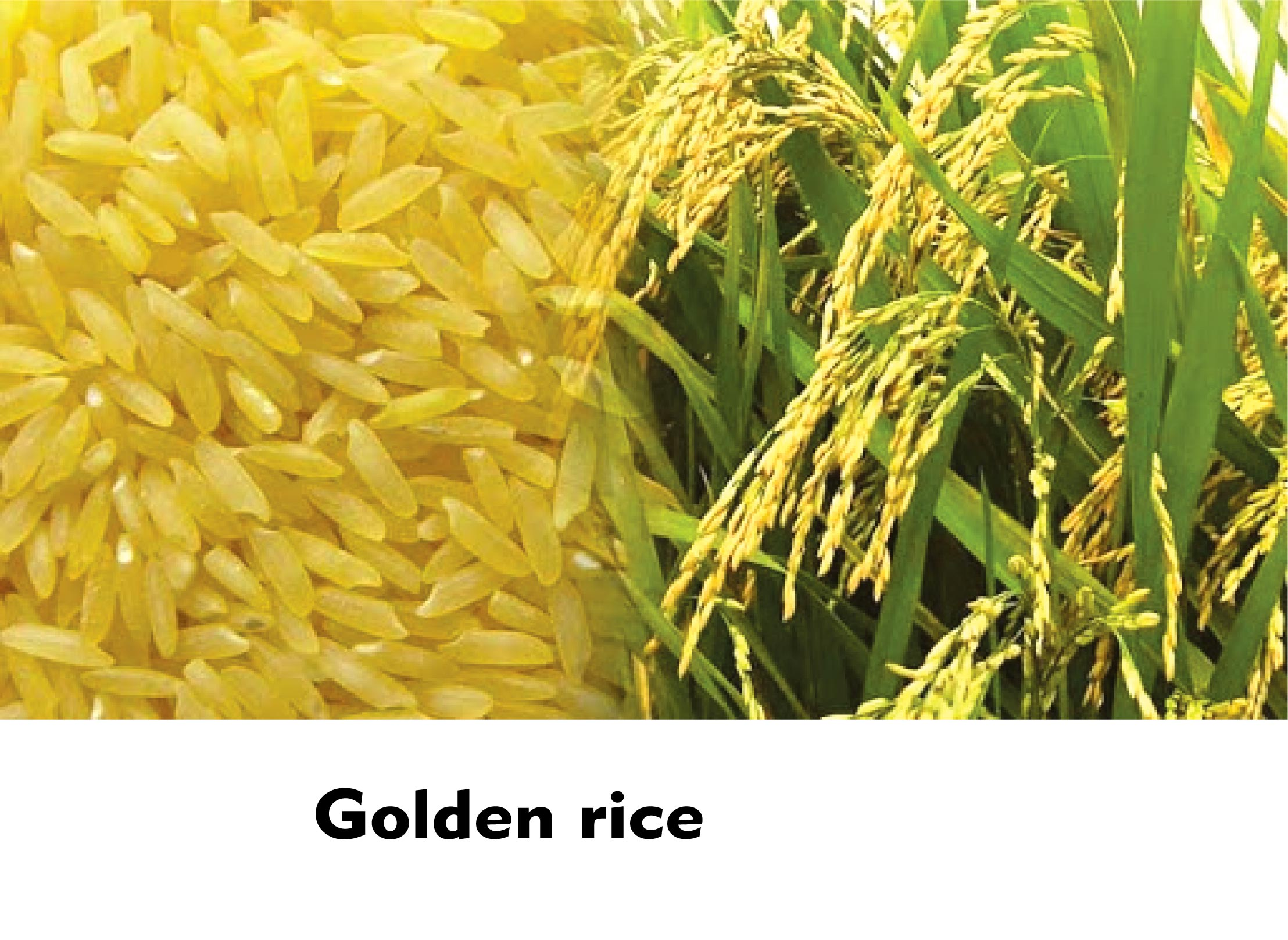
What is golden rice?
Answer
582.6k+ views
Hint: Rice is a staple food crop for over half of the world's population, supplying people in Asian countries with 30–72 percent of energy intake, and being an important crop for targeted vitamin deficiencies. With genetic modification technologies, the crops are updated with additional nutritional values to enhance people's survival.
Complete answer:
The new genetically modified rice (Oryza sativa) type is golden rice. It is produced for the synthesis of vitamin A, to biosynthesize beta-carotene. It has a high content in vitamin A. It was designed by Peter Beyer. Since rice grains (seeds) are yellow due to β-carotene, the rice is commonly referred to as golden rice.
It is intended to produce a fortified food to be grown and consumed in areas where dietary vitamin A is in short supply, a deficiency which is estimated to kill 670,000 children under the age of 5 each year and cause an additional 500,000 cases of permanent childhood blindness.
Additional Information: -Golden Rice is a biofortified, genetically engineered crop. Biofortification increases the crop’s nutritional value.
-The Golden Rice Project was first launched in 1999, when two researchers, Ingo Potrykus and Peter Beyer, proposed to the Rockefeller Foundation their proposal to genetically modify rice in order to increase its nutrients.
-The International Rice Research Institute (IRRI) has agreed to grow Golden Rice to fulfill the inventor's vision: to make the nutritional benefits of Golden Rice available as an alternative vitamin A deficiency (VAD) intervention, at no additional cost compared to white rice, to governments, small farmers or consumers in developing countries.
Note: Golden rice is rice fortified by vitamin A, with a daffodil gene, and rich in carotene. Golden rice differs from its parental strain by incorporating three genes for the biosynthesis of beta-carotene. The parental strain in their leaves will naturally produce beta-carotene, where it is involved in photosynthesis. The plant usually does not contain the pigment in the endosperm, where photosynthesis does not occur.

Complete answer:
The new genetically modified rice (Oryza sativa) type is golden rice. It is produced for the synthesis of vitamin A, to biosynthesize beta-carotene. It has a high content in vitamin A. It was designed by Peter Beyer. Since rice grains (seeds) are yellow due to β-carotene, the rice is commonly referred to as golden rice.
It is intended to produce a fortified food to be grown and consumed in areas where dietary vitamin A is in short supply, a deficiency which is estimated to kill 670,000 children under the age of 5 each year and cause an additional 500,000 cases of permanent childhood blindness.
Additional Information: -Golden Rice is a biofortified, genetically engineered crop. Biofortification increases the crop’s nutritional value.
-The Golden Rice Project was first launched in 1999, when two researchers, Ingo Potrykus and Peter Beyer, proposed to the Rockefeller Foundation their proposal to genetically modify rice in order to increase its nutrients.
-The International Rice Research Institute (IRRI) has agreed to grow Golden Rice to fulfill the inventor's vision: to make the nutritional benefits of Golden Rice available as an alternative vitamin A deficiency (VAD) intervention, at no additional cost compared to white rice, to governments, small farmers or consumers in developing countries.
Note: Golden rice is rice fortified by vitamin A, with a daffodil gene, and rich in carotene. Golden rice differs from its parental strain by incorporating three genes for the biosynthesis of beta-carotene. The parental strain in their leaves will naturally produce beta-carotene, where it is involved in photosynthesis. The plant usually does not contain the pigment in the endosperm, where photosynthesis does not occur.

Recently Updated Pages
The number of solutions in x in 02pi for which sqrt class 12 maths CBSE

Write any two methods of preparation of phenol Give class 12 chemistry CBSE

Differentiate between action potential and resting class 12 biology CBSE

Two plane mirrors arranged at right angles to each class 12 physics CBSE

Which of the following molecules is are chiral A I class 12 chemistry CBSE

Name different types of neurons and give one function class 12 biology CBSE

Trending doubts
Which are the Top 10 Largest Countries of the World?

What are the major means of transport Explain each class 12 social science CBSE

Draw a labelled sketch of the human eye class 12 physics CBSE

Differentiate between insitu conservation and exsitu class 12 biology CBSE

The computer jargonwwww stands for Aworld wide web class 12 physics CBSE

State the principle of an ac generator and explain class 12 physics CBSE




